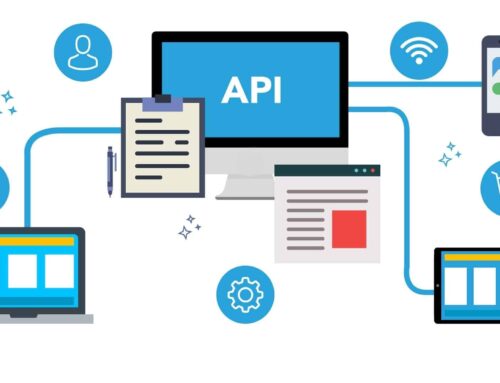Best Practices for Secure API Integration
Introduction
In today’s digital economy, APIs power the seamless flow of data between applications, platforms, and services. From fintech to healthcare, businesses rely on custom API integration to streamline processes, enhance the customer experience, and gain a competitive advantage. However, with this growing dependence comes an urgent responsibility—ensuring secure API integration. Without proper safeguards, APIs can become vulnerable entry points for cyberattacks, data breaches, and unauthorized access.
This article examines best practices for secure custom API integration, providing actionable strategies for business leaders and developers seeking to protect their digital assets while driving innovation.
Why Secure Custom API Integration Matters
The Growing API Landscape
APIs have become the backbone of digital transformation. Whether it’s integrating payment gateways, CRMs, or third-party logistics, businesses depend on APIs to connect critical systems. But more connections mean more risk if security isn’t prioritized.
Risks of Poorly Secured APIs
-
Data breaches exposing sensitive customer information
-
Unauthorized access to core business systems
-
Compliance violations (HIPAA, GDPR, PCI DSS)
-
Service disruptions caused by malicious traffic
A poorly implemented API can undo years of trust and damage a brand’s reputation. That’s why secure API integration isn’t just a technical requirement—it’s a business imperative.
Best Practices for Secure API Integration
1. Use Strong Authentication and Authorization
Implement robust authentication mechanisms like OAuth 2.0 or JWT (JSON Web Tokens) to control access.
-
Ensure role-based access controls (RBAC) so users only have access to what they need.
-
Regularly audit and revoke unnecessary API keys.
Pro tip: Avoid using static keys embedded in applications; instead, rotate credentials frequently.
2. Enforce HTTPS and Data Encryption
Always use TLS/SSL (HTTPS) for API communication to prevent man-in-the-middle attacks.
-
Encrypt data both in transit and at rest.
-
Use strong encryption standards like AES-256 for sensitive information.
This ensures confidential data like financial records or patient details remain secure during integration.
3. Validate and Sanitize Inputs
APIs are prime targets for injection attacks (SQL injection, XSS).
-
Validate all inputs against expected formats.
-
Use whitelisting instead of blacklisting wherever possible.
-
Employ sanitization techniques before storing or processing data.
4. Implement Rate Limiting and Throttling
Prevent denial-of-service (DoS) attacks by controlling traffic.
-
Define rate limits (e.g., 100 requests/minute per user).
-
Monitor unusual spikes in API usage.
-
Use throttling to prevent abuse while maintaining service availability.
5. Monitor, Log, and Audit API Activity
Real-time monitoring is essential for detecting suspicious activities.
-
Maintain detailed logs of API calls, user activity, and errors.
-
Set up alerts for abnormal behavior (e.g., repeated failed login attempts).
-
Conduct periodic security audits and penetration testing.
6. Secure API Gateways
An API gateway acts as the first line of defense.
-
Enforce authentication, encryption, and request filtering at the gateway.
-
Use gateways to manage versioning, rate limiting, and threat detection.
-
Integrate gateways with WAF (Web Application Firewalls) for added protection.
7. Follow the Principle of Least Privilege
When integrating APIs, ensure minimal access rights.
-
Don’t grant full admin access to third-party services.
-
Apply granular permissions at the API endpoint level.
8. Regularly Update and Patch
Outdated APIs and dependencies are a hacker’s dream.
-
Continuously update API libraries, SDKs, and frameworks.
-
Patch vulnerabilities as soon as they are discovered.
-
Maintain version control for better traceability.
9. Ensure Compliance with Industry Standards
Depending on your industry, APIs must adhere to regulations.
-
Healthcare: HIPAA compliance for patient data
-
Finance: PCI DSS for payment security
-
Global operations: GDPR for data privacy
Non-compliance can lead to fines and legal complications.
10. Educate Developers and Teams
Security is not just about tools—it’s about culture.
-
Train developers on secure coding practices.
-
Conduct internal workshops on API vulnerabilities (OWASP API Security Top 10).
-
Foster collaboration between IT, development, and compliance teams.
Benefits of Secure Custom API Integration
-
Improved Trust & Reputation – Customers and partners trust businesses that prioritize data security.
-
Operational Continuity – Prevent service disruptions caused by attacks.
-
Regulatory Compliance – Avoid costly penalties by meeting compliance standards.
-
Competitive Advantage – Secure integrations enable faster innovation without risk.
Related Services
To explore more about integrating APIs securely and effectively, check out our services:
Conclusion
APIs are the foundation of today’s interconnected digital landscape. However, their power comes with significant responsibility. By following these best practices for secure custom API integration, businesses can minimize risks, safeguard sensitive data, and enable seamless innovation.
The key takeaway: security should never be an afterthought—it must be an integral part of your API integration strategy.
Frequently Asked Questions
Custom API integration is the process of connecting two or more applications through tailored APIs to share data and automate processes seamlessly.
API security is critical to prevent data breaches, unauthorized access, and compliance violations that can harm businesses financially and reputationally.
You can secure APIs by using strong authentication, encrypting data, applying rate limiting, validating inputs, and monitoring traffic continuously.
Common tools include API gateways (like Kong, Apigee), encryption libraries, authentication frameworks (OAuth, JWT), and monitoring platforms.
Ideally, API integrations should be audited quarterly or after any significant update to detect vulnerabilities early.
Get Started Today
Contact us today for a free consultation and start building better integrations.

